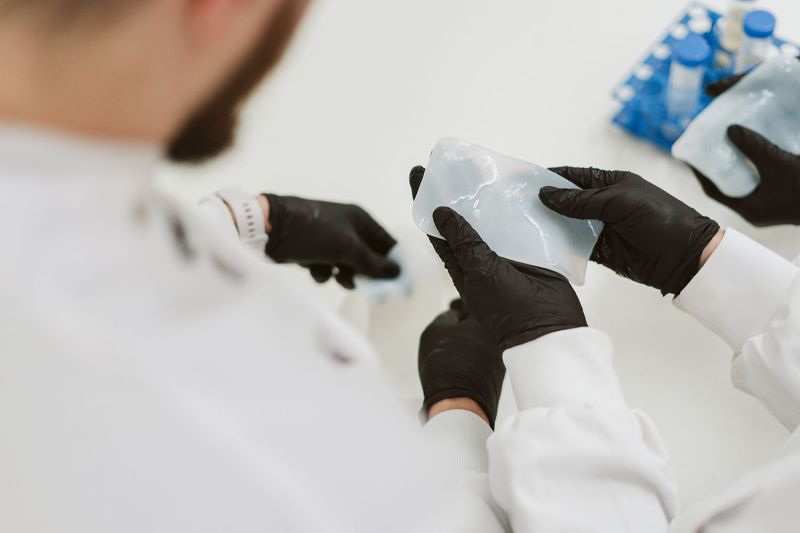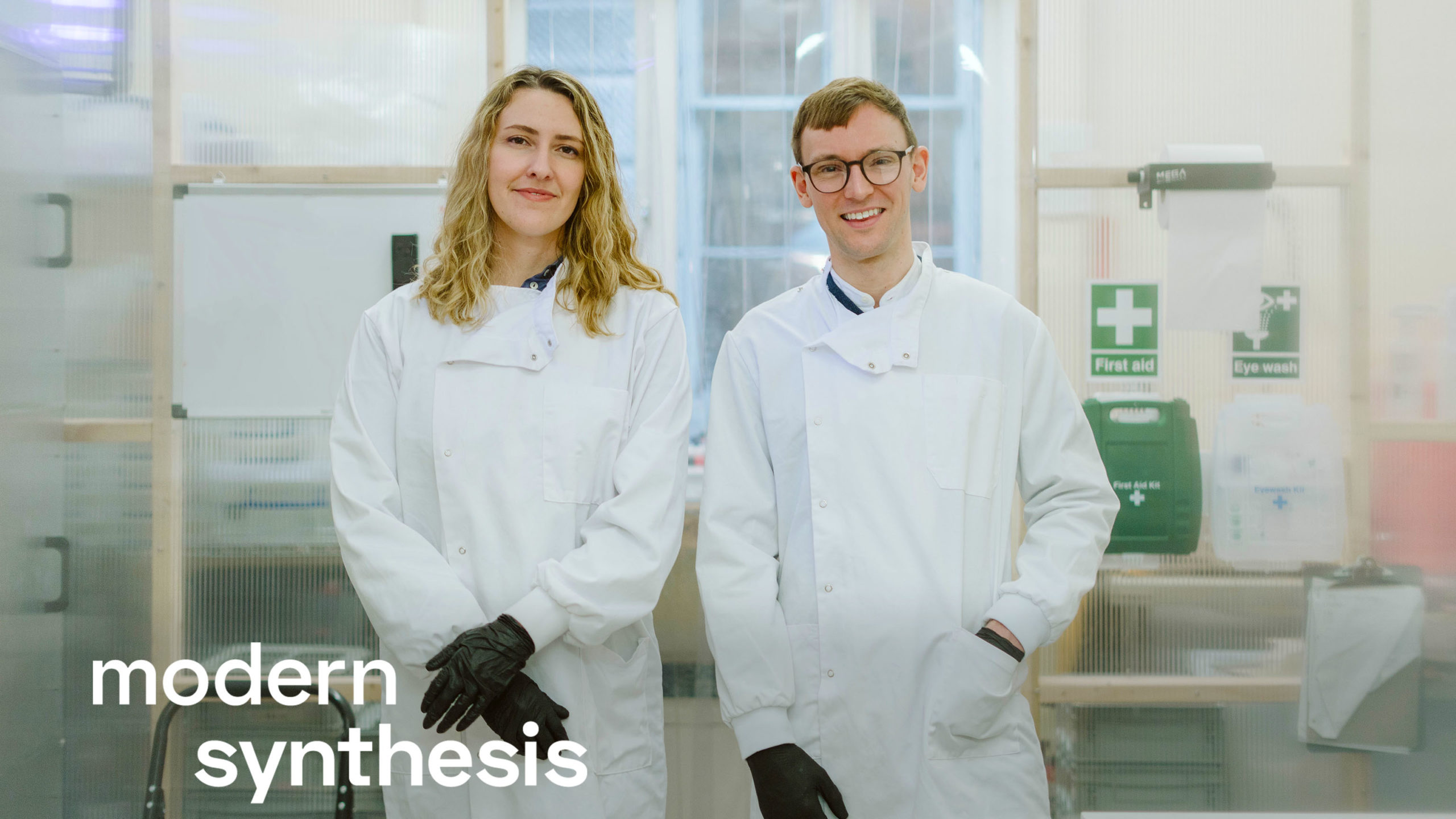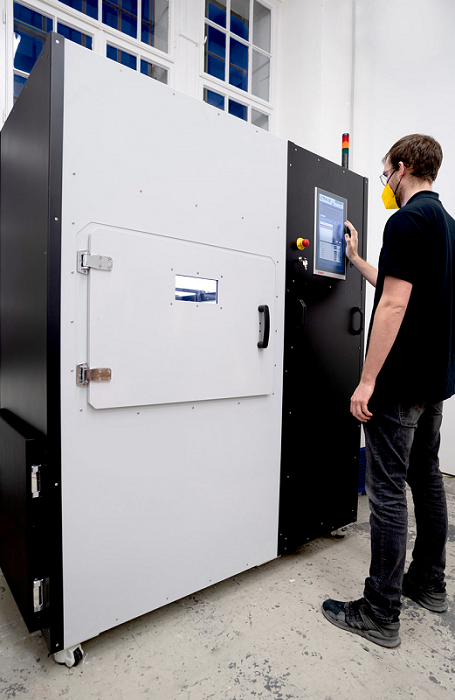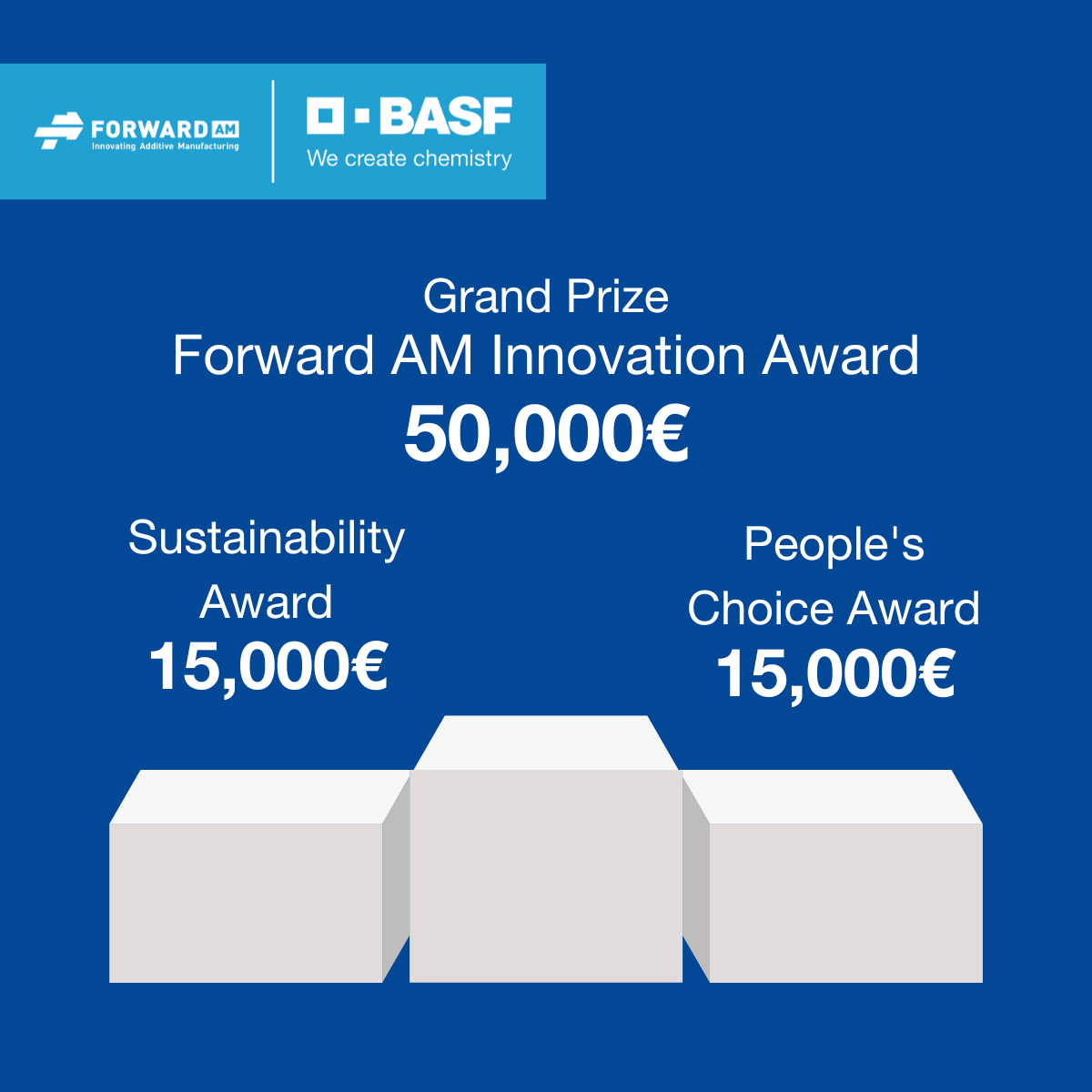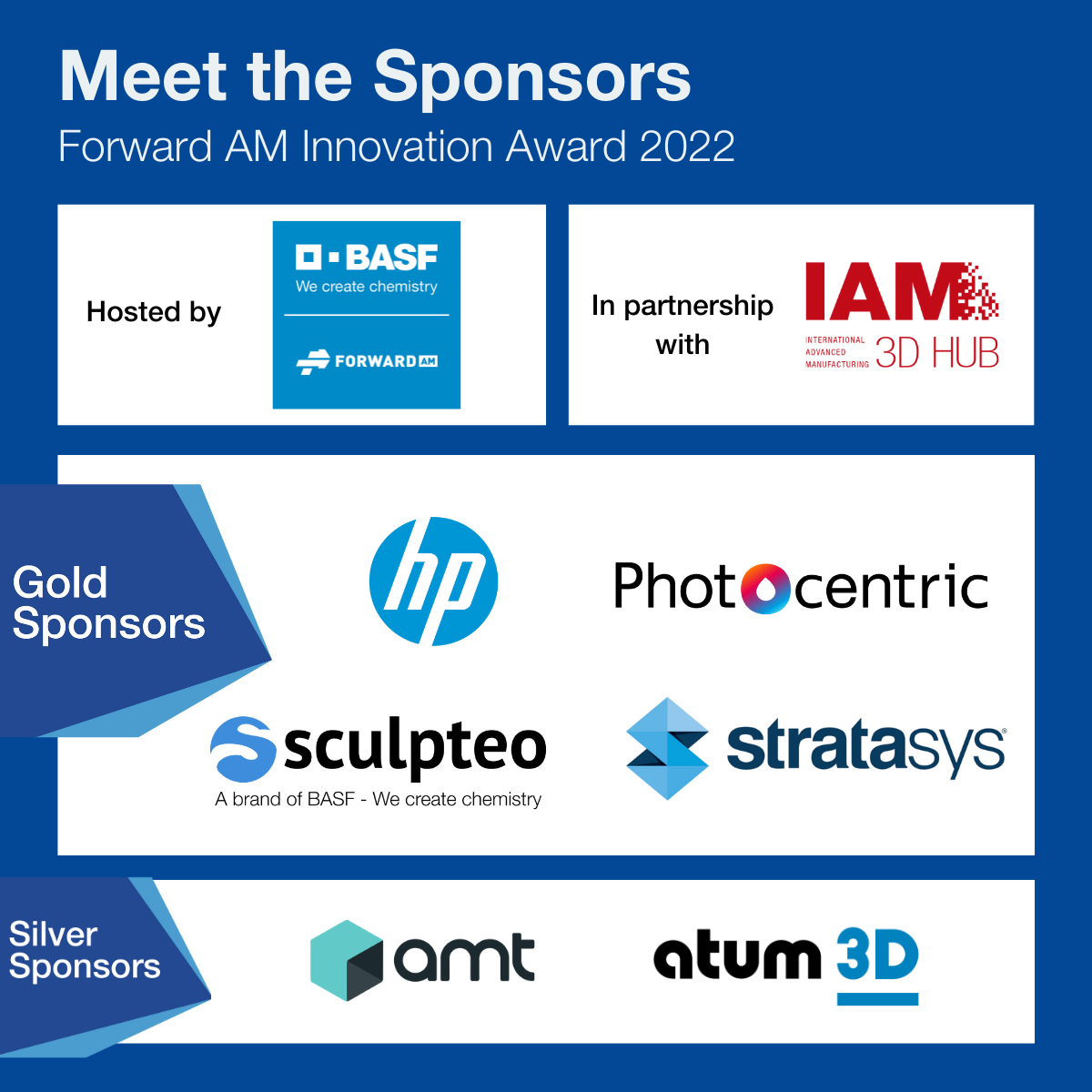3DPrint.com | The Voice of 3D Printing / Additive Manufacturing |
- CORE Acquires GoProto 3D Printing Service
- Next-gen Biomaterials Startup Raises $4.1M
- 3D Printing News Briefs, June 23, 2022: New Software, DfAM Course, & More
- Asteroid Hopping Robot Reinforced with 3D Printed Carbon Fiber
- 2022 Forward AM Innovation Award Aims to Highlight Innovative 3D Printing Startups
- Saint-Gobain Launches Parametric 3D Printed Stairs
- Raytheon Company Behind Next-Gen Spacesuits Opens New 3D Printing Center
| CORE Acquires GoProto 3D Printing Service Posted: 23 Jun 2022 06:30 AM PDT CORE Industrial Partners, the Chicago-based private equity firm, announced that RE3DTECH, a 3D printing service bureau in its portfolio, has acquired GoProto, a 3D printing service bureau in San Diego. CORE, which specializes in funding advanced manufacturing businesses, acquired RE3DTECH earlier this year.
 In an interview with 3DPrint.com's Sarah Saunders from December, 2021, CORE's founder and managing partner, John May, said the company had acquired almost 20 additive manufacturing (AM) companies. The interview took place just before the company purchased RE3DTECH, so, between RE3DTECH and GoProto, it seems fair to estimate that number is now at about 20. Given that it was bought by RE3DTECH, GoProto will likely be absorbed into the company. In the interview from last December, May also noted that many of the company's AM acquisitions have been "integrated" into the platform of one of those acquisitions, Fathom. A rapid prototyping services bureau, Fathom itself has acquired 13 companies over the last few years, according to May. So, it's unclear at this point if RE3DTECH and GoProto will continue to operate separately from CORE's other purchases, or if they will also end up integrated into Fathom.  Fathom has 12 sites nationwide: half in the Midwest, with the other half scattered along both coasts, as well as Texas. While Fathom has one location already in the Bay Area, it is as yet unrepresented in Southern California. The fact that GoProto's headquarters are in San Diego could be one motivating factor behind the acquisition, and could also suggest the likelihood that GoProto will be brought into the Fathom fold. In addition, GoProto has a network around the country. Along with Southern California, GoProto has reach in a few other major regions where Fathom currently doesn't operate, including the Pacific Northwest and the Carolinas. Finally, GoProto is also heavy in the Midwest, which — again, if the company is merged with Fathom — further solidifies CORE's presence in the heartland of America's auto industry. Certainly, there are many unknowns here, but one thing is clear: CORE has a plan. There's no way to tell yet the extent to which the plan will succeed, but it does seem to bode well for the sector, as a whole, that there seems to be such an urgently pressing incentive behind consolidating a nationwide network of AM service bureaus. Images courtesy of GoProto The post CORE Acquires GoProto 3D Printing Service appeared first on 3DPrint.com | The Voice of 3D Printing / Additive Manufacturing. |
| Next-gen Biomaterials Startup Raises $4.1M Posted: 23 Jun 2022 06:00 AM PDT It's turning out to be a big year for biomaterials in fashionwear, especially now that a handful of startups are building a new class of materials and getting plenty of attention. With success stories like those of Bolt Threads' spider silk apparel, Pangaia's sustainably grown seaweed-fiber and flower joggers, and MycoWorks' mushroom leather, it's becoming easier for companies to go the sustainable route. Even sportswear powerhouse Adidas announced a new no-plastic and no-waste footwear venture. The latest startup to become part of this niche segment is Modern Synthesis, a UK-based biomaterials manufacturer that has created a microbial textile platform. The firm’s technology leverages bacteria to transform sugar from agricultural waste into nanocellulose, a biodegradable material valued for its abundance and its strength. Through its new process, which the company considers similar to 3D printing, pieces can be designed to shape, resulting in zero scraps of leftover material and waste. Since its inception in 2019, the startup has focused on creating new biomaterials to replace animal and petrochemical-derived fabrics that could help the fashion industry lower its carbon footprint. It seems that goal will be possible now that the company has raised $4.1 million in seed funding to support its microbial textile technology. Funding from this latest seed round, which closed on June 1, 2022, will also go towards a new pilot facility in southwest London, increasing Modern Synthesis' capacity to collaborate with brands and manufacturers aligned with its mission. The upcoming building will serve to scale the production of biomaterials as quickly, widely, and responsibly as possible, declared the company on a social media post. Furthermore, the planned site will house a lab, along with sampling and pilot production capabilities, house a larger team, and is on track to begin operations in the third quarter of 2022.
Backers for this round include VC firms AgFunder (also an investor in MycoWorks), Acequia Capital, Collaborative Fund, Ponderosa Ventures, and Possible Ventures, as well as nonprofit environmental organization Parley for the Oceans, former Jimmy Choo CEO Pierre Denis, and Climate Capital Collective, an investment firm that supports companies that directly or indirectly reduce global greenhouse gas emissions. Fashionable evolutionInstead of creating a replica for a material like leather, Modern Synthesis says it is focused on developing an entirely new material that is more sustainable and can replace non-woven fabrics such as leather – and in the process, building out a completely separate category for materials. AgFunder subsidiary AgFunderNews reported that Modern Synthesis' microbial weaving process mimics the warp-and-weft technique of traditional weaving to create a customizable biomaterial in roughly 10 to 14 days. Similar to 3D printing, pieces can be designed to shape, but first, engineers create a scaffold, using robotics to place fibers in the desired shape or structure. Then, genetically modified bacteria grow around those structures to make the final material.  Andreas Kamolz leads the design and engineering at Modern Synthesis. Image courtesy of Modern Synthesis via LinkedIn. So far, Modern Synthesis has filed the first patent application for its microbial weaving tech and has been able to build the upper part of a shoe using this process. Additionally, Keane collaborated with Imperial College London graduate student Marcus Walker to create a prototype shoe made of the first self-dying bio-assembled material grown by a genetically modified organism, later launched at Hong Kong business incubator The Mills Fabrica. And the company says it has delivered its materials to a "key sportswear customer" for prototyping and plans to eventually leverage microbes to displace a variety of animal- and petrochemical-derived leathers, textiles, and films.
Biotextiles may not be new to the fashion industry, even dating back as far as the 1930s. However, experts consider that bio fabrics couldn't achieve a breakthrough because luxury brands opted for natural fibers instead of synthetic ones. But things have changed, and customers now demand biofabrics as part of the ethical fashion movement, so the biotextile market is experiencing a surge of innovative startups and could become huge by 2028. The post Next-gen Biomaterials Startup Raises $4.1M appeared first on 3DPrint.com | The Voice of 3D Printing / Additive Manufacturing. |
| 3D Printing News Briefs, June 23, 2022: New Software, DfAM Course, & More Posted: 23 Jun 2022 05:30 AM PDT In today’s 3D Printing News Briefs, Lithoz is introducing a new technology and printer, and Artec 3D has launched an update to its Studio software. Finally, on to partnerships, as America Makes and Wohlers Associates are offering a Design for Additive Manufacturing course together, and AddUp is partnering with the Acrotec Group to offer an industrial solution to the medtech sector. Lithoz Announces New LIS Technology, Ceramics 3D PrinterFirst up, Austria-based ceramics 3D printing leader Lithoz GmbH is launching its new CeraMax Vario V900 system at the ceramitec event this week, in addition to a new website and its new Laser-Induced Slipcasting (LIS) technology for large ceramic parts with thick walls and full densities. LIS uses industrial water-based slurries of oxide and non-oxide ceramics, which enables it to easily print dark ceramics like silicon carbide; this fills a major gap in the ceramics market. The slurry solution completely absorbs the laser beam, meaning the LIS-powered CeraMax Vario V900 offers purely heat-induced treatment. The new printer features a build envelope up to 250 x 250 x 290 mm, can apply up to 1.000 μm slurry per layer in less than a minute, and a much simpler debinding process, which allows for 3D printing thick walls. Green parts printed on the system are machineable with no restrictions, so they can be reintroduced into a traditional ceramics process chain, and optional software upgrades allow for better parameter adjustments and control. The CeraMax Vario V900 also offers database-supported storage and process data management for easy documentation of print jobs, real-time process monitoring, scan speed of up to 8 m/s, an F-Theta lens and high-speed scanner for precision optics, and is Industry 4.0-ready. Artec 3D Releases Artec Studio 17 3D Scanning Software3D scanner and software developer Artec 3D has launched the latest version of its award-winning scanning software, Artec Studio 17 (AS17). The release has plenty of exciting new updates and features, with better functionality for reverse engineering, quality inspection, and full-color CGI workflows, and was designed with the user in mind, so all subscribers will automatically receive full access to AS17. There are several user-driven UI and UX improvements for transformed 3D workflows, including a new GPU optimizer, 10% faster processing workflow, an updated algorithm, and more. AS17 also features better metrological accuracy with manual control over targets and new scan-to-CAD tools, Boolean operations for reverse engineering, more efficient mesh splitting and a better segment brush, and a new photo viewing mode.
DfAM Course by America Makes & Wohlers AssociatesAmerica Makes and Wohlers Associates, powered by ASTM International, announced that they are partnering up to offer a three-day design for additive manufacturing (DfAM) course next month. The course, held at America Makes’ headquarters in Youngstown, Ohio, will be held July 18-20, and is open to the public, though America Makes members will receive a discount. According to the Wohlers Report 2022, end-use parts are the largest application of AM, as seen in the chart above, and production of final parts nearly always requires DfAM. The course will cover the economies of AM, such as consolidating multiple parts into one, in addition to topology optimization, DfAM rules and guidelines, lattice and mesh structures, modeling and simulation of distortion caused by heat, and more. The course will be taught by DfAM expert Olaf Diegel, with assistance from Terry Wohlers.
AddUp & Acrotec Partnering for Industrial AM Medtech SolutionFinally, global metal 3D printing OEM AddUp and the Acrotec Group, one of the largest European medical contract manufacturers, are partnering up to develop an industrial AM solution for the medtech sector. Acrotec’s Medtech division is focused on the dental, spine, and traumatology sectors, fabricating surgical implants and instruments as well as precision components and sub-assemblies for medical devices, while AddUp has been collaborating with Medtech customers to develop and print surgical instruments and all kinds of implants, including knee, hip, and shoulder prostheses, so these two companies know what they’re talking about. 3D printing is used more than ever in healthcare, due to improved design with personalization options, flexibility and productivity increases, and cost reduction. Together, AddUp and Acrotec will develop additive and industrial solutions for the medical sector, which is always on the lookout for more innovative tools.
The post 3D Printing News Briefs, June 23, 2022: New Software, DfAM Course, & More appeared first on 3DPrint.com | The Voice of 3D Printing / Additive Manufacturing. |
| Asteroid Hopping Robot Reinforced with 3D Printed Carbon Fiber Posted: 23 Jun 2022 05:00 AM PDT A novel robot designed for low gravity could be the key to future asteroid exploration. Dubbed SpaceHopper, this three-legged "hopping" robot is described as a revolutionary mobility platform that will enable new missions to explore a vast uncharted part of our solar system. Behind the project is a team of ten undergraduate students in their final year that decided to optimize the robot's design by 3D printing carbon-reinforced components. The students, all majoring in various engineering fields, turned to Zürich-based firm Scheurer Swiss, known for its long-standing expertise with fiber composite technologies, to 3D print the parts that ensure the robot has more stability and is lightweight while hopping in zero gravity. Space exploration can be tricky and extremely dangerous, but asteroids have an added challenge. Unlike Mars or the Moon, where gravity is respectively 38% and 16% that of Earth, asteroids have a very low gravity. It is so small that it is not the friendliest location to drive a rover vehicle or walk around. This difficult – especially weightless – environment of small astronomical bodies requires a new, unique research solution. The "SpaceHopper" robotics project supported by Scheurer Swiss aims to be just that. Backed by experts from research, industry, and lightweight construction, the ten promising engineers from Swiss research university ETH Zurich and Zurich University of Applied Sciences (ZHAW) have developed and built a revolutionary mobility platform using additive technologies. Designed for exploring asteroids, SpaceHopper's movements are controlled with artificial intelligence (AI), such that it can jump and reorient only by moving its legs. Scheurer Swiss CEO, Dominik Scheurer, points out that carbon-reinforced 3D printing is ideally suited for the robotic components of the SpaceHopper because it can virtually produce any shape. He states that hollow bodies, such as the robot's legs, can be provided with support structures to stabilize them without unnecessarily weighing them down. Like in many space-related innovations, additive manufacturing is the ideal manufacturing process for the SpaceHopper and is cost-effective. Further commenting on the robot, Emma Steinke, one of the project designers and a mechanical engineering student at ETH Zürich, said one of the challenges was to "make the legs as thin-walled as possible to minimize the overall weight of the robot." Regardless, they still have to withstand the forces of the bouncing impact.
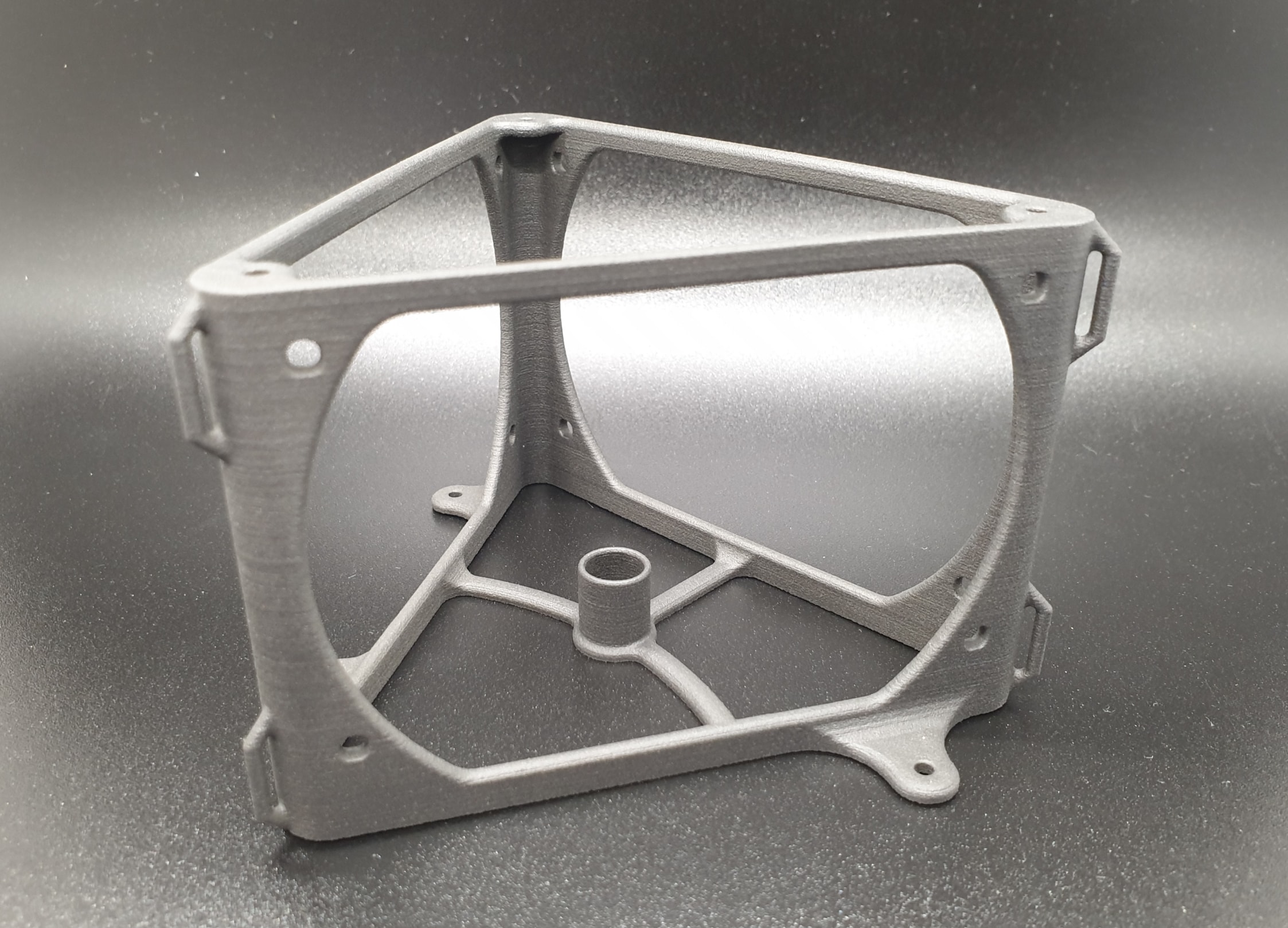 Carbon-reinforced 3D printing by Scheurer Swiss for the electronic structure of the bouncing space robot. Image courtesy of Scheurer Swiss. After only eight months of development, the team successfully presented the prototype at the end of May 2022 at ETH Zürich, home to eight of the team's students and the place where the SpaceHopper idea originated as part of the university's Robotic Systems Lab. During the public performance, the team proved that an intermediate fidelity prototype of the three-legged mobility platform worked. This was primarily thanks to an ingenious differential drive (a two-wheeled drive system with independent actuators for each wheel) in its hip. Designing this special part meant the team spent hours on CAD. Once they honed in on the digital model they needed, the project's mechanical design team could 3D print the single components and then integrate them. According to the group, they also made the first test rig to connect the differential drive to two motors to check whether the mechanism works and if the software can command the desired end-effector positions of SpaceHopper's leg.  Carbon-reinforced robot leg from the Scheurer Swiss 3D printer for the innovative bouncing robot. Image courtesy of Scheurer Swiss. Asteroids represent the bits and pieces left over from the process that formed the inner planets, including Earth, and may harbor the answers to fundamental questions, such as the formation of the solar system and our existence. Furthermore, several initiatives are attempting to find ways to extract asteroid resources for resupplying during long-duration space missions. With such challenging goals ahead, the SpaceHopper team is taking the next leap in legged space robotics and hopes their robot will enable a broad range of new missions to explore asteroids like Ceres, Psyche, and 162173 Ryugu. For now, the main goal is to prove that the robot can hop large distances, land on a predetermined point, control its attitude mid-air, carry a scientific payload, and stand back up after a failed landing. The team has also been working on an electronics subsystem that houses the sensor interfaces of the robot, its power distribution system, and an onboard computer that will enable the mechanical and software-related capabilities of low-gravity motion. The post Asteroid Hopping Robot Reinforced with 3D Printed Carbon Fiber appeared first on 3DPrint.com | The Voice of 3D Printing / Additive Manufacturing. |
| 2022 Forward AM Innovation Award Aims to Highlight Innovative 3D Printing Startups Posted: 23 Jun 2022 04:30 AM PDT This year is the second edition of the Forward AM Innovation Award, the global contest for startups using Additive Manufacturing. The call for applications is open until July 17th, so it's time to apply now! Key industry leaders interested in supporting startups and innovations team up to join forces and help accelerate 3D printing startups that create high-potential products thanks to Additive Manufacturing. More than 100,000€ in prizes are available this year. Four finalists will be chosen during the Semi-Finals, each winning 10,000€ and a chance to pitch live at the Finals on September 30th, 2022. Three Awards are available for the winning startups: the Grand Prize of 50,000€, the Sustainability Award of 15,000€ and the Public's Choice Award of 15,000€. All prizes will be redeemed with at IAM3DHUB. Under the brand Forward AM, BASF 3D Printing Solutions aims at industrializing AM by offering materials and solutions. As a host to the contest, the company is very keen to support the 3D printing startup ecosystem and help it accelerate. This year, along with Forward AM, four Gold Sponsors will select the winning startups: HP, Photocentric, Sculpteo and Stratasys. AMT and atum3D are joining as Silver Sponsors. Both Gold and Silver sponsors are playing a key role at supporting the 3D printing startup ecosystem thanks to their participation. A great team of ecosystem partners will be providing exposure as well: AM Ventures, Asimov Ventures, MGA, MatterHackers, Women in 3D Printing, along with key 3D printing media partners: 3Dnatives, 3DPrint.com, 3Druck.com and All3DP. For this Forward AM Innovation Award 2022 edition, we are more focused than ever on our 5 key criteria: efficient use of Additive Manufacturing, a sustainable approach, potential for scalability, a good team, and IP strategy. What is the format this year?This year, the application phase is open until July 17th. All the startups creating products with 3D printing to apply are invited to apply. The Selection Jury will then meet to score and pick the top 16 applications. In September, these startups will pitch in front of the jury during the Semi-Finals. And the big Finals will happen on September 30th at the IAM3D Hub in Barcelona and live online for a unique hybrid event not to miss. Additive Manufacturing will continue to shape the future of many sectors. By combining high-performance materials with exciting and innovative applications, we are aiming at industrializing AM and highlighting the work of trailblazing entrepreneurs who are leveraging 3D printing to create the products of tomorrow. If you are a startup using 3D printing, make sure to apply by July 17th at: https://move.forward-am.com/award-2022 The post 2022 Forward AM Innovation Award Aims to Highlight Innovative 3D Printing Startups appeared first on 3DPrint.com | The Voice of 3D Printing / Additive Manufacturing. |
| Saint-Gobain Launches Parametric 3D Printed Stairs Posted: 22 Jun 2022 06:30 AM PDT As with bridges, people seem to have a particular affinity for 3D printed stairs. With good reason: aside from just being eye-catching structures, the ability to print things like bridges and staircases could be a significant factor determining the long-term success of the additive construction sector. Although stairs produced via additive manufacturing (AM) are becoming more commonplace lately, there's still something quite unique about the latest such project, launched by Saint-Gobain: they're engineered with parametric design. The project reduced CO2 emissions by 50 percent and construction time by eight weeks, compared to traditional methods. The French industrial conglomerate, which has shown great enthusiasm for adopting AM techniques over the past few years, is making the product available via its Weber Beamix concrete mortar additive construction facility in the Netherlands. Weber Beamix also collaborated with Dutch construction engineering firm Witteveen + Bos on the project. 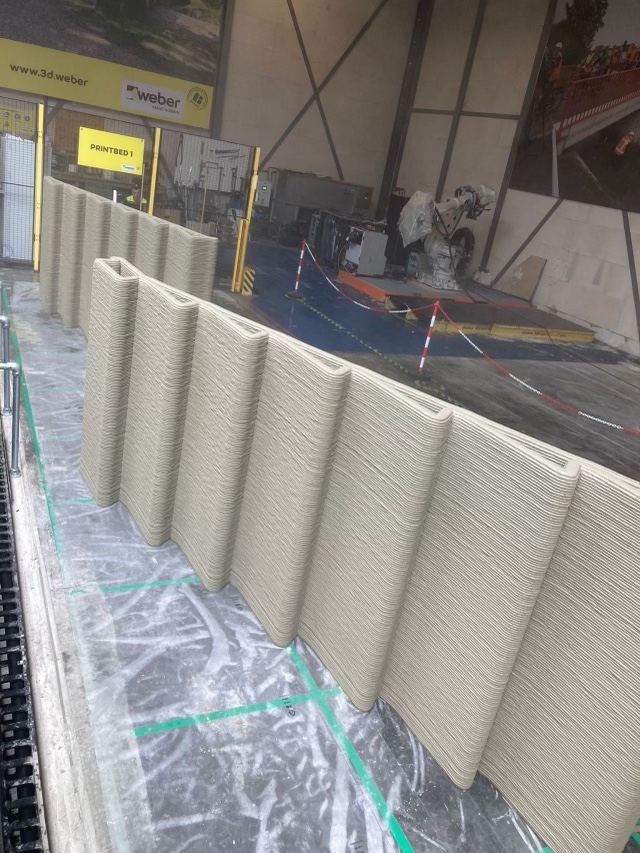 Specifically, these are embankment stairs, which parametric design seems especially well-suited for. By using parametric modeling — basically, a process that creates designs automatically based on parameters — staircases can be molded to precisely whatever sloped natural environment they're going to be built on. Not only does this allow builders to minimize material waste during the construction process, it could, in the long run, also be greatly beneficial to enhancing the safety of the end-products. Moreover, the use of parametric modeling in this case could lead to wider adoption of the tool within additive construction. 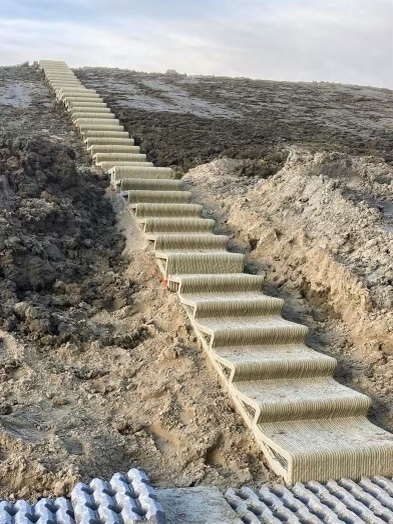 Of course, there's the cost savings, too. And at about 30% cheaper than a regular prefab staircase, it's not surprising that the stairs are already installed at an impressive 20 locations, in the Netherlands and the UK. Finally, customers have the option of designing the staircases themselves on Weber Beamix's website, or sending the company dimensions and/or a drawing via email.  As I noted in the first paragraph, any additional function of conventional construction that can be taken on by additive beyond printing walls is a big deal. This is true for a variety of reasons, including fairly standard ones, like the reaching of larger economies of scale for the supply chains involved. Even more importantly, though, from a long-term perspective, every additional kind of structure that can be printed increases the possibility that, eventually, entire construction projects can be printed from top-to-bottom. Additionally, the incorporation of parametric modeling aids in that same effort. The possibilities for increasing architectural sustainability opened up by the ability to design and print structures directly into the landscape are endless. The more that software utilizing parametric modeling is used in additive construction, the more potential there also is that additive could at some point in the future be seen not merely as equal to conventional construction, but preferable to it. Images courtesy of Saint-Gobain The post Saint-Gobain Launches Parametric 3D Printed Stairs appeared first on 3DPrint.com | The Voice of 3D Printing / Additive Manufacturing. |
| Raytheon Company Behind Next-Gen Spacesuits Opens New 3D Printing Center Posted: 22 Jun 2022 06:00 AM PDT Collins Aerospace, a division of Raytheon Technologies, revealed its new additive manufacturing center and the expansion of its maintenance, repair, and overhaul (MRO) capabilities at its Monroe, North Carolina campus. Collins, which specializes in providing solutions for the global aerospace and defense industry, already owns multiple 3D printers, and this new addition will only increase its production capability of lightweight 3D printed aerospace parts. Initially opened in 2004, Collins' 160,000-square-foot Monroe MRO facility serves more than 300 customers across the aerospace and defense industry and repairs more than 6,500 unique part numbers for aircraft, including actuation systems, helicopter rescue hoists, and air management systems. The new AM center – which has two 3D printers with plans to add more – joins the company's existing global network of additive production centers in Iowa, Minnesota, Singapore, and additive research centers in Connecticut and Poland. 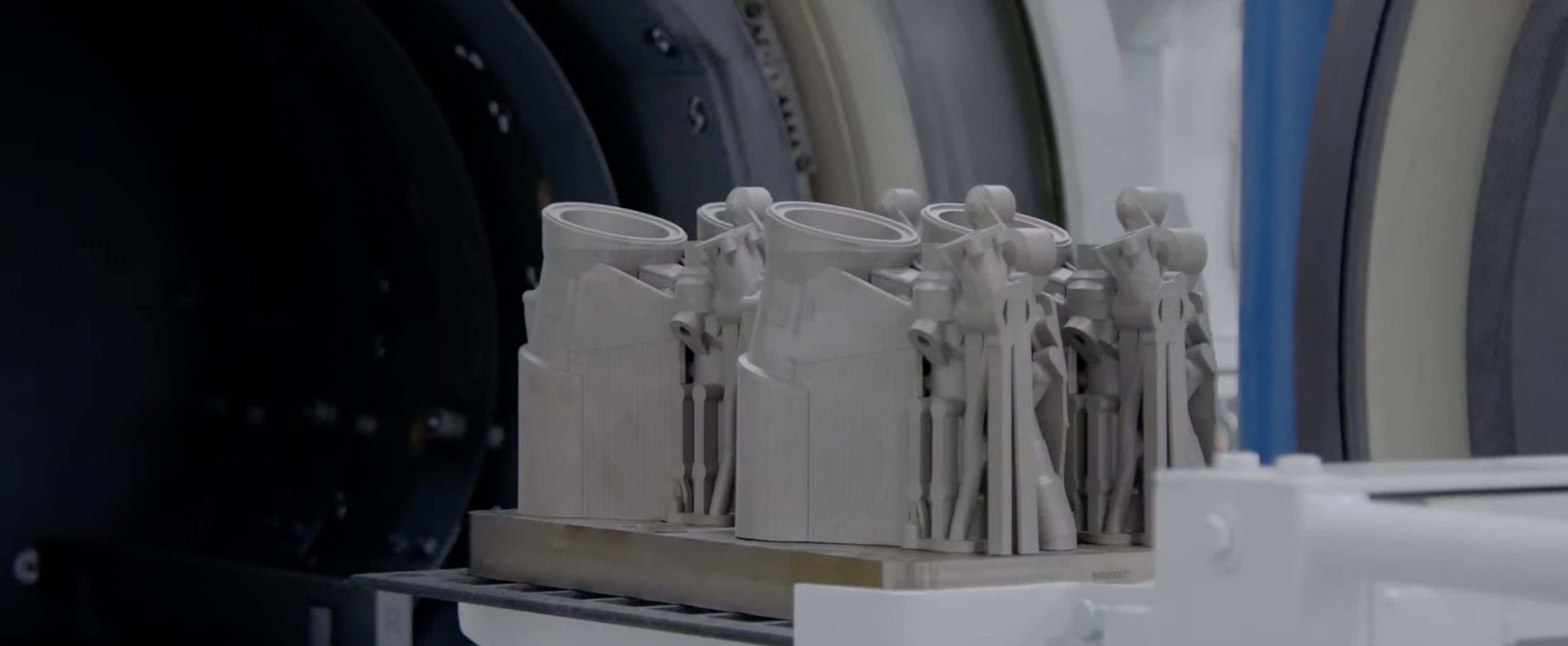 Collins Aerospace relies on additive manufacturing for part manufacturing. Image courtesy of Collins Aerospace. Collins already uses several AM systems, including multiple SLM 280 and SLM 500 3D printers, Renishaw systems, and several 3D Platform and Prusa printers for prototyping. For example, two months ago, Collins became one of the first ten customers in the world to purchase an SLM Solutions 12-laser NXG XII 600 3D printing system with plans to install it at its engine nozzle production facility in West Des Moines, Iowa, during the second half of 2022. At its Kilkeel, Northern Ireland facility, Collins has been making a significant contribution to the region's thriving aerospace sector while leveraging 3D printing innovations. In the last few years, Kilkeel's operations modernization team has been converting plastic waste into feedstock to 3D print non-critical manufacturing jigs and fixtures across the whole production site, achieving 72% carbon dioxide equivalent savings. 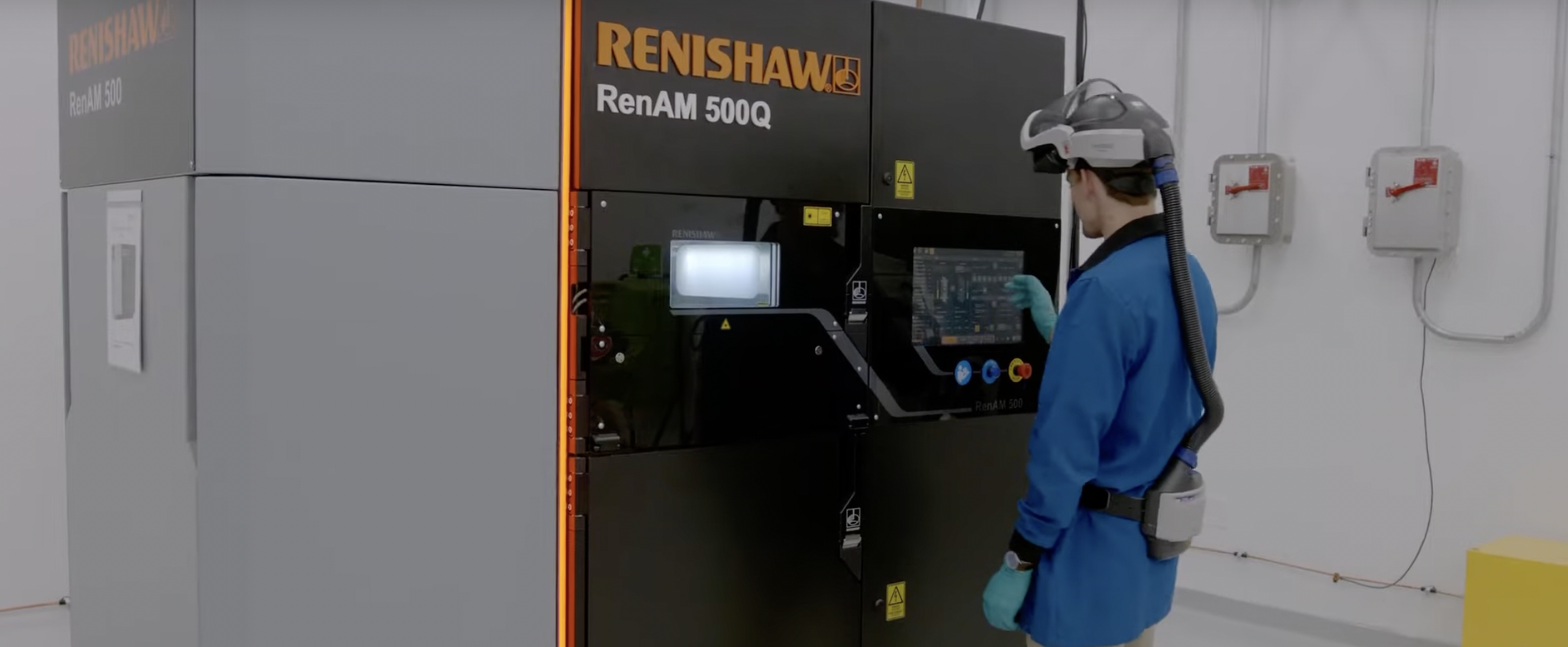 Engineers at Collins Aerospace rely on Renishaw machines for manufacturing aerospace parts. Image courtesy of Collins Aerospace. Commenting on the latest addition, Collins VP of Operations Kevin Myers said that additive manufacturing offers several key benefits compared to traditional manufacturing. "By using additive manufacturing to produce aircraft parts and components, we can help reduce weight, cost, and time to market, and provide more sustainable solutions for our customers." In 2021, the company completed a $30 million expansion of the facility and has since invested an additional $15 million as part of the Monroe City Council and Union County Board of Commissioners' new economic development project. The MAGNET100 program is intended to encourage continued capital investment by companies over ten years, with investment thresholds of $30 million in the first three years and $50 million in the first seven years. According to the Monroe site director Mary DeStaffan, the facility is one of Collins' largest MRO sites worldwide. Not only has the company added new advanced manufacturing equipment to streamline operations, improve quality control and enhance employee safety, but it has also increased the size of Monroe's workforce, bringing on more than 70 new employees in the past year and continuing to hire for additional openings. With over 70,000 employees in 300 sites, $23 million in net sales, and more than $3 billion invested annually in R&D, Collins is now one of the largest aerospace industry suppliers in the world. The company was even selected to outfit the next generation of space explorers. Along with teammates ILC Dover and Oceaneering, it will deliver NASA's upcoming spacesuits, which astronauts could wear when working outside the International Space Station (ISS) and – within the next decade – on the Moon. In addition, aiming to cater to the space industry, Collins recently revealed that it has supplied various subsystems for life support and thermal control onboard the CST-100 Starliner spacecraft that recently underwent a successful Orbital Flight Test 2 (OFT-2) mission. Collins also has some major partnerships to advance aircraft hardware and technologies, such as a recently revealed collaboration with Boeing to test a new environmentally friendly air chiller for airline premium suits and passenger social zones. Furthermore, Collins also leads the APNT (assured positioning, navigation, and timing) solutions category for ground platforms, having delivered more than 10,000 navigation systems to military armed forces around the world. Moving forward, it is clear that the company will incorporate more additive technologies into its facilities worldwide, especially as it continues to increase its already comprehensive portfolio of platforms to solve some of its customers' toughest challenges and to meet the demands of a rapidly evolving global aerospace and space market. The post Raytheon Company Behind Next-Gen Spacesuits Opens New 3D Printing Center appeared first on 3DPrint.com | The Voice of 3D Printing / Additive Manufacturing. |
| You are subscribed to email updates from 3DPrint.com | The Voice of 3D Printing / Additive Manufacturing. To stop receiving these emails, you may unsubscribe now. | Email delivery powered by Google |
| Google, 1600 Amphitheatre Parkway, Mountain View, CA 94043, United States | |
